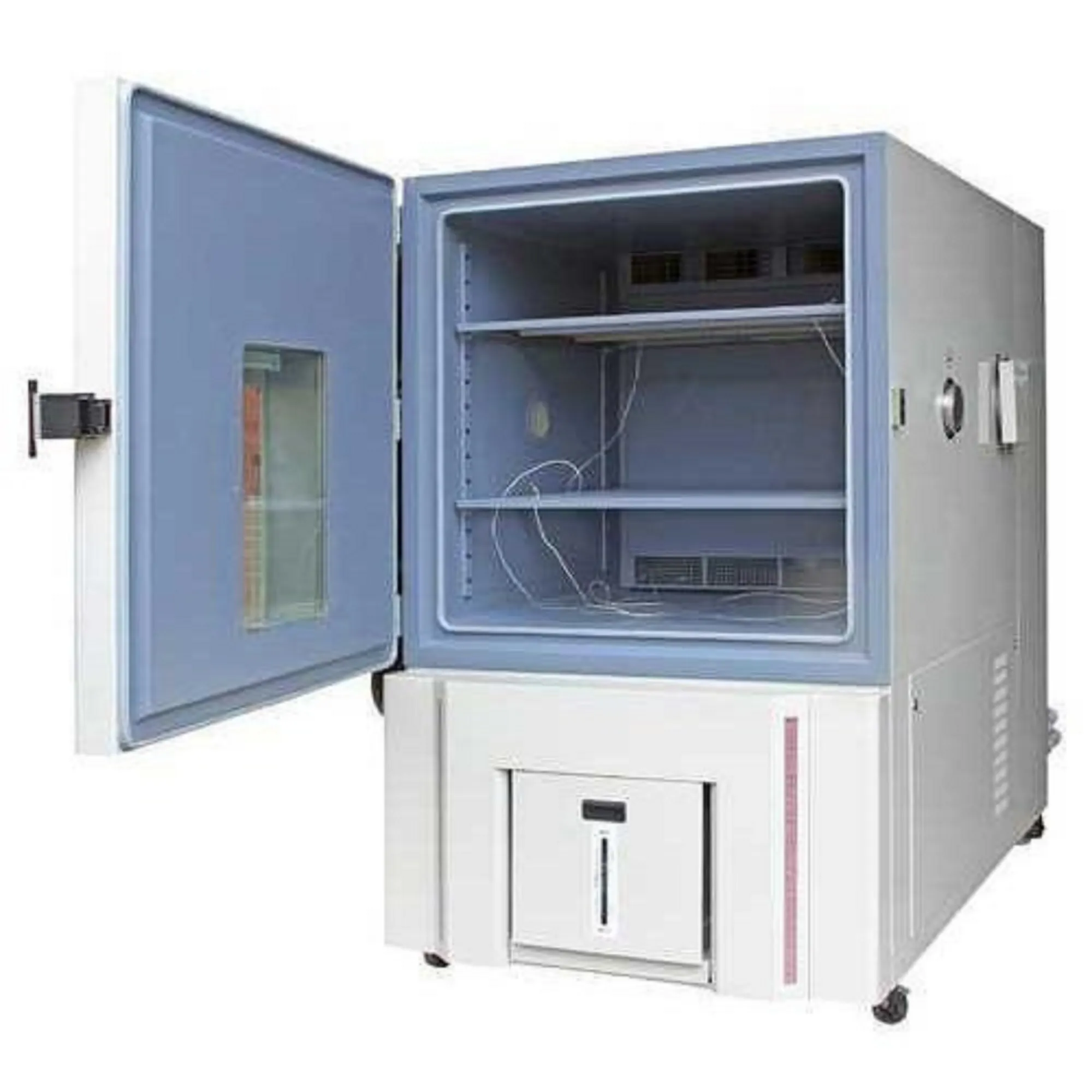
What is an Environmental Test Chamber?
An Environmental Test Chamber, also known as an Environmental Simulation Chamber, is a controlled enclosure used for simulating various environmental conditions. These chambers are equipped to create precise temperature, humidity, and other environmental factors to test how materials, components, and products react under stress. They are commonly used to evaluate the performance, functionality, and long-term durability of products under extreme environmental conditions.
Environmental test chambers can simulate a variety of conditions, such as:
- Temperature: High or low temperatures to simulate extreme heat or cold conditions.
- Humidity: High or low humidity levels to test the impact of moisture.
- Vibration: Simulate mechanical vibrations that products may experience during transportation or operation.
- Altitude: Reproduce conditions of high-altitude environments, often in aerospace or automotive testing.
- Corrosion: Create a saline environment to simulate the corrosive effects of saltwater on materials.
By subjecting products to these conditions, manufacturers can assess how they will perform in real-world situations and identify potential issues before mass production.
How Does an Environmental Test Chamber Work?
Environmental test chambers function by creating a controlled atmosphere inside a sealed chamber. These chambers are equipped with advanced technology and systems that allow precise regulation of temperature, humidity, pressure, and other environmental factors. The basic working mechanism involves the following components:
1. Temperature Control:
Environmental test chambers use cooling and heating systems to regulate temperature. Commonly, chambers are equipped with a refrigeration system to lower temperatures and electric heaters to raise the temperature. Sensors and thermostats monitor the internal temperature to maintain the desired conditions.
2. Humidity Control:
Humidity levels are controlled by introducing or removing moisture from the air. This is often achieved through a humidification system (adding water vapor) or a dehumidification system (removing moisture). The chamber is equipped with sensors to monitor and control the humidity levels to maintain the specified environment.
3. Air Circulation and Ventilation:
Proper airflow is crucial for uniform environmental conditions. Air circulation systems (fans or blowers) are used to ensure consistent temperature and humidity levels throughout the chamber. The ventilation system helps control the air quality and pressure levels.
4. Control Panel & Monitoring Systems:
Modern environmental test chambers come with sophisticated control panels and software systems that allow operators to set and monitor conditions. The control panel enables users to adjust the temperature, humidity, and other factors with high precision. Sensors provide real-time data, allowing continuous monitoring and ensuring that the test conditions remain stable throughout the process.
5. Data Logging and Analysis:
Test chambers often come equipped with data logging features that track various parameters such as temperature, humidity, and pressure over time. This data can be used for analysis, quality control, or regulatory compliance.
Types of Environmental Chambers
There are several types of environmental test chambers, each designed to simulate specific environmental conditions. Some common types include:
Thermal Shock Chambers:
These chambers are used to subject products to rapid temperature changes, simulating extreme hot and cold conditions that a product might encounter during its life cycle. For example, electronic devices or automotive components may undergo thermal shock testing to assess their ability to withstand sudden shifts in temperature.Temperature and Humidity Chambers:
These chambers are designed to test products in both high and low-temperature environments while simultaneously controlling humidity. These chambers are commonly used for testing the stability of materials, electronics, packaging, and pharmaceutical products.Walk-In Test Chambers:
Larger than standard chambers, walk-in test chambers allow larger products or bulk testing. These chambers are used for testing items such as industrial equipment, automotive parts, and building materials.Altitude Test Chambers:
These chambers simulate high-altitude conditions, typically used for testing aerospace, automotive, or military products that need to perform at high altitudes.Corrosion Test Chambers:
Corrosion chambers use salt spray or fog to simulate the effects of a corrosive environment on materials. These chambers are used to test the corrosion resistance of materials, coatings, and finishes in industries like automotive, marine, and construction.
Applications of Environmental Test Chambers
Environmental test chambers are used in a wide range of industries to ensure product performance and quality. Some of the most common applications include:
1. Electronics and Electrical Testing
Testing the reliability of electrical devices under extreme conditions (such as overheating or excessive moisture) is critical for ensuring that electronic components perform well in real-world situations. Test chambers help assess the performance of products like smartphones, computers, and other electronic gadgets.
2. Aerospace and Automotive
In aerospace and automotive industries, test chambers are used to simulate extreme temperatures, altitudes, and humidity conditions that vehicles and aircraft will encounter in operation. These chambers help ensure that components like engines, batteries, and materials can endure harsh environments.
3. Pharmaceuticals and Medical Devices
Environmental testing is vital for pharmaceutical products and medical devices, as they must maintain efficacy and functionality under varying environmental conditions. Stability testing of medications, vaccines, and medical devices helps verify that these products will remain effective throughout their shelf life.
4. Material Testing
Testing the durability of materials such as plastics, metals, and textiles is essential for manufacturing industries. Environmental chambers can simulate exposure to UV rays, moisture, and temperature extremes to assess how materials will behave over time.
5. Packaging and Food Products
Packaging materials, particularly those used in food, beverages, and pharmaceuticals, need to be tested for their durability under various conditions. Test chambers help simulate storage conditions, temperature changes, and exposure to moisture, ensuring that packaging materials can withstand these stress factors.
6. Product Development and Quality Control
Product manufacturers use environmental test chambers to refine their designs and ensure that products meet quality standards before reaching consumers. From temperature and humidity testing to accelerated aging and fatigue testing, these chambers are indispensable for product development.
Conclusion
Environmental test chambers play a crucial role in ensuring that products meet the demands of a wide range of environmental conditions. By subjecting materials, components, and finished products to extreme conditions in a controlled setting, manufacturers can identify potential weaknesses and improve product reliability. With applications spanning numerous industries—electronics, automotive, pharmaceuticals, aerospace, and more—environmental test chambers are vital tools for testing product durability, quality, and performance.
Investing in an environmental test chamber is essential for businesses that want to guarantee the reliability of their products, ensure compliance with regulations, and reduce the risk of failure in real-world environments.
